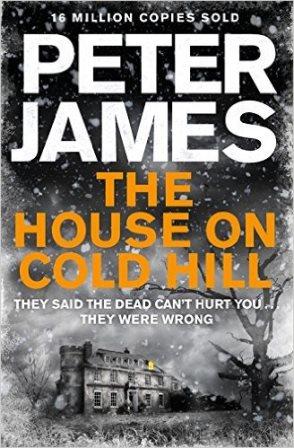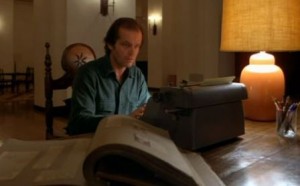
Ghosts are trapped in the past, right?
They might communicate by bashing tables, putting out the lights and throwing a few objects around, but they’re typically portrayed as very old school. Well, not in Peter James’ first ghost story, in which it seems that ghosts can text, email and generally use modern technology to bedevil you. I kept expecting them to flash up on a Twitter feed or write a Facebook post. This worked quite well when I still thought there might be human malevolence at work, supporting the spirits, but I found it slightly more difficult to suspend belief when it became apparent that only one person could be responsible…
But let’s start at the beginning.
Peter James, bestselling and well-renowned crime writer, has turned his hand to the supernatural. Intriguingly, he claims to have drawn inspiration from a real-life haunted house he lived in with his first wife. Fortunately, the real-life haunting had a less tragic conclusion than his novel…
What’s it about?
Townies Ollie and Caro Harcourt move with their daughter, Jade, to an old Georgian mansion. It’s falling apart and is in deperate need of repair, but, more problematically, it quickly becomes apparent that they are sharing their home with at least one ghost. As the spooky sightings become more malevolent, will the Harcourts heed the warnings and leave or will they find themselvers trapped in Cold Hill House forever?
What’s it like?
Very much your typical haunted house story: furniture moves in impossible ways; spirits appear and disappear; and some local research begins to reveal a history of horrid happenings in the house. The spookiness is well integrated into a very straightforwardly written tale about a regular family; although they must have a fair stash of money to have ever considered taking on a dilapidated Georgian mansion, Ollie, Caro and Jade are consistently pleasant and get along with everyone while dutifully pursuing their allotted roles in life. Their nice blandness allows you to focus on the strange shennanigans, especially as time begins to slip…

This is the dramatic front cover of my ARC. Oooh.
What I liked
The opening pages are shocking. Initially I was merely puzzled – who are Jonny, Felix, Daisy and Rowena? The blurb only mentioned the Harcourts. I’m sure you can guess what happens to O’Hare family; I doubt you can guess how it happens, but it’s a brutal scene that sets the mood for the rest of the book. While Caro frequently suggests leaving, Ollie is stubbornly insistent on staying, and there’s really only one way this can end.
“Heeeeeere’s Jonny!”
As the story progressed I found it reminded me in some respects of ‘The Shining’. While Ollie is far too loving towards his wife to ever be in danger of deliberately harming her, his inability to leave Cold Hill House is clearly placing her in mortal danger. Gradually, he becomes less certain of his own sanity; could he possibly be sabotaging himself? But why would he do that? This quietly deepening fear develops neatly alongside simple practicalities. It seems that Ollie didn’t read the surveyor’s report with sufficient wariness, so every time the workmen dig out a wall or a floor they discover another aspect of the house that needs a complete (and expensive) overhaul. This and the mundane pattern of Ollie’s day (he works in his study for two hours then wanders downstairs to make a sandwich or pick up his daughter from school) effectively counterpoint the increasing tension. And it really was tense; I was keen to discover more about what was really happening and why, but here is where the book failed me a little.

‘Now, what was I typing?’ Jack Torrance from ‘The Shining’
‘Evil isn’t born, it’s built’…
…or so claims the strapline on my ARC. But…I’m not totally clear about how that relates to the story James tells. Perhaps that’s my fault and there was something I missed, but I wanted to know more about the practicalities behind the haunting. There were a few intriguing details along the way that I hoped would be expanded upon at the end, but they were never explained. Obviously it can be effective to have some elements of a ghost story left mysterious and unresolved, but I felt a little bit cheated and would have liked a bit more background.
Final thoughts
This is a story that has actually grown on me since I finished reading it. Perhaps because I read most of the book in three long sittings while battling a cold, I found myself making reflecting on the story more when I finished it than I had while reading. I really like the ambiguity surrounding how and why the Harcourts meet the end they do, and this is the kind of book where you might be tempted upon finishing to immediately return to the beginning and reread it, searching for clues to help create a timeline of events.
I do feel there were a few missed opportunities. Crucially, as mentioned above, I wanted the sense of malevolence in the house to be more defined by the end, perhaps by developing more of the background. I also really enjoyed the parts of the book where characters reflected on what ghosts were and how they might operate, and thought there could have been more of that. Finally, by the end the ghosts seemed capable of anything they fancied, which almost detracted from their power as far as I was concerned. (If something is simply all-powerful then it becomes less frightening and is simply unconvincing or inevitable.) However, these are possibly quite individual concerns and interests.
Overall it’s an effective haunted house story which will have you wishing Ollie wasn’t quite so stuborn and wondering precisely when he sealed his fate.